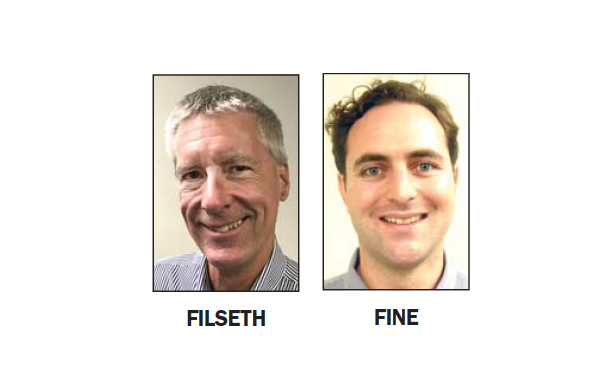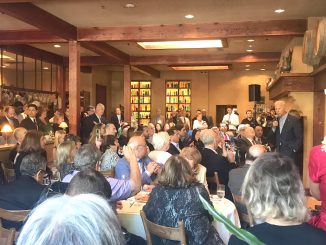
BY ALLISON LEVITSKY
Daily Post Staff Writer
Palo Alto City Council is set to elect a new mayor and vice mayor for 2019 tonight (Jan. 7), and at least two members of council already think they know who it’s going to be.
Mayor Liz Kniss and Councilwoman Karen Holman both said Friday that they expect Vice Mayor Eric Filseth to be elected mayor and first-term Councilman Adrian Fine to be elected vice mayor.
The vice mayor doesn’t always advance to mayor the following year. In fact, the vice mayor has been passed over 23 times in the last 53 years.
But Kniss and Holman both think Filseth is the likely pick for mayor this time around.
Holman said Fine seemed to be the likely vice mayor through the “process of elimination.”
“These things are oftentimes done politically. I think Adrian probably has the broadest support,” Holman said.
Fine declined to say whether he wanted to serve as vice mayor.
Fine, like Kniss, votes with the pro-growth majority on council, while Filseth and Holman both side with the Residentialist minority.
“I think the council has come together pretty well and is functioning, I think, more comfortably together, so I would not be surprised if Eric were to become the mayor,” Kniss said. “And in a very nice putting together of the two sides and attempting to blend them together, there’s a chance that Adrian’s going to be the vice mayor.”
This wouldn’t have happened anytime in the last five years, Kniss said, praising council’s efforts at working together.
In 2017, Kniss served as vice mayor under her pro-growth colleague Greg Scharff as mayor.
Last year, Kniss was elected mayor for the third time since 1994 and Filseth was elected vice mayor, giving a more balanced leadership to the council.
Holman pointed out that if Fine serves as vice mayor this year, he could wind up being the mayor in 2020. If he’s planning to run for a second term, campaigning while serving as mayor would likely help him get re-elected.
Selection process called too political
But Holman said she hopes council changes its system of selecting a new mayor and vice mayor to strip the decision of its political implications.
Many neighboring city councils, including in Los Altos and Menlo Park, automatically elect the most senior member of the council who has not served as mayor.
Council members are ranked by seniority on the council, then by the number of votes they received in the election which initiated their first term.
Mountain View just passed a similar policy on Thursday.
“I think that’s a healthier way and a more democratic way to do it from a variety of perspectives,” Holman said. “It would represent, basically, the public’s choices for leadership.”
Getting the largest number of votes in the election shows that voters have the most confidence in that candidate, Holman said.
Plus, switching to a system of rotation would prevent council members from violating the state open meeting law, the Brown Act, by lobbying each other for support.
Under the Brown Act, council members are only allowed to discuss an agenda item with a minority of council members. On a seven-member council, that means council members can only talk about a given issue with no more than two colleagues.
“It’s pretty easy to slip and have conversations that expand beyond the maximum number of council members without even knowing it sometimes,” Holman said.
The current system of selecting a new mayor encourages council members to lobby each other for votes, Holman said, and punishes those who follow the Brown Act carefully.
The Kelly Fergusson controversy
In 2010, then-Menlo Park Councilwoman Kelly Fergusson lobbied Councilmen Rich Cline and Peter Ohtaki to vote for her for mayor.
Fergusson was voted in as mayor 3-2, with votes from herself, then-Councilwoman Kirsten Keith and Cline.
Menlo Park Fire Protection Board Member Peter Carpenter blew the whistle on Fergusson’s lobbying, leading her to give up her seat as mayor and have to attend ethics classes.
But Kniss said she would oppose going to the rotation system. Instead, she wants to see Palo Alto voters either directly elect a mayor for a two-year or four-year term, or have council elect a mayor for a two-year term, which Sunnyvale does.
Kniss said she had discussed that system with Gary Fazzino, the late former mayor.
Then again, Kniss said, the city will likely end up having to make major elections changes if it’s forced to go to district elections under the California Voter Rights Act.
The city hasn’t received a letter threatening a lawsuit over the law as many other local government agencies have, including the Palo Alto school district and the city of Menlo Park, which went to district elections last year.
“When that happens, it’s going to change,” Kniss said.
The mayor and vice mayor will be selected without votes from Holman, Scharff or first-term Councilman Cory Wolbach. Holman and Scharff are both terming out and Wolbach lost his reelection bid in November.
The council is also being reduced from nine members to seven. Councilwoman-elect Alison Cormack will be sworn in for her first term tonight.



